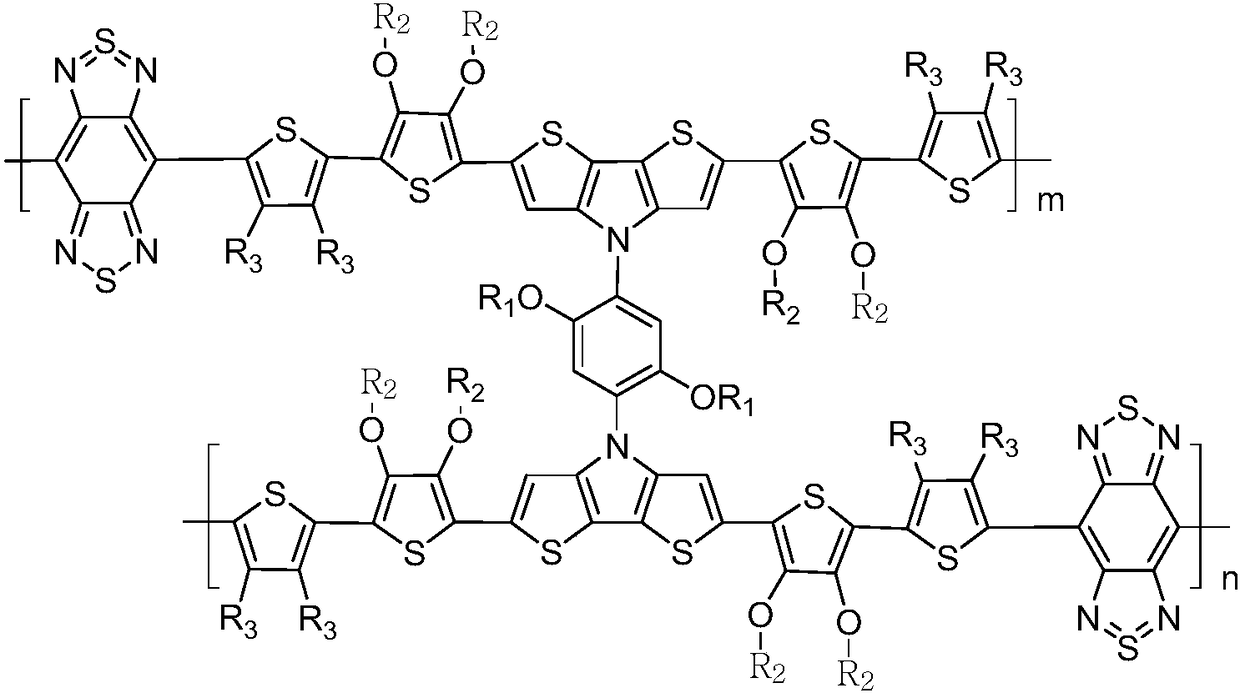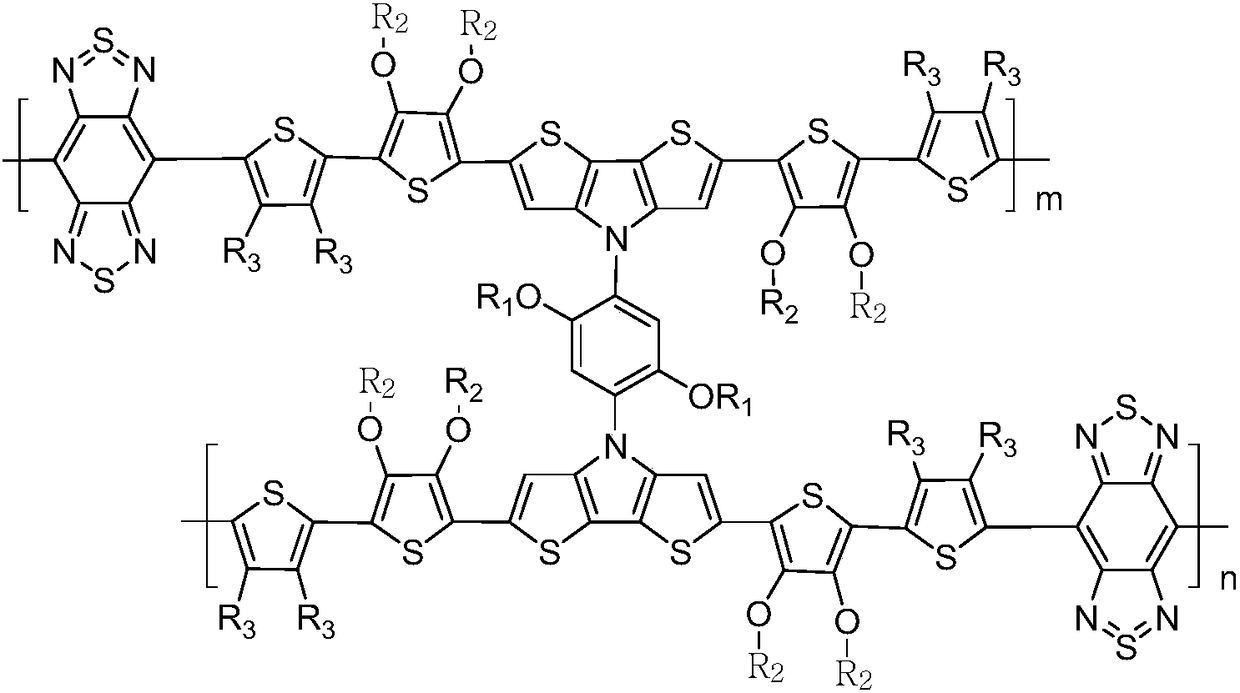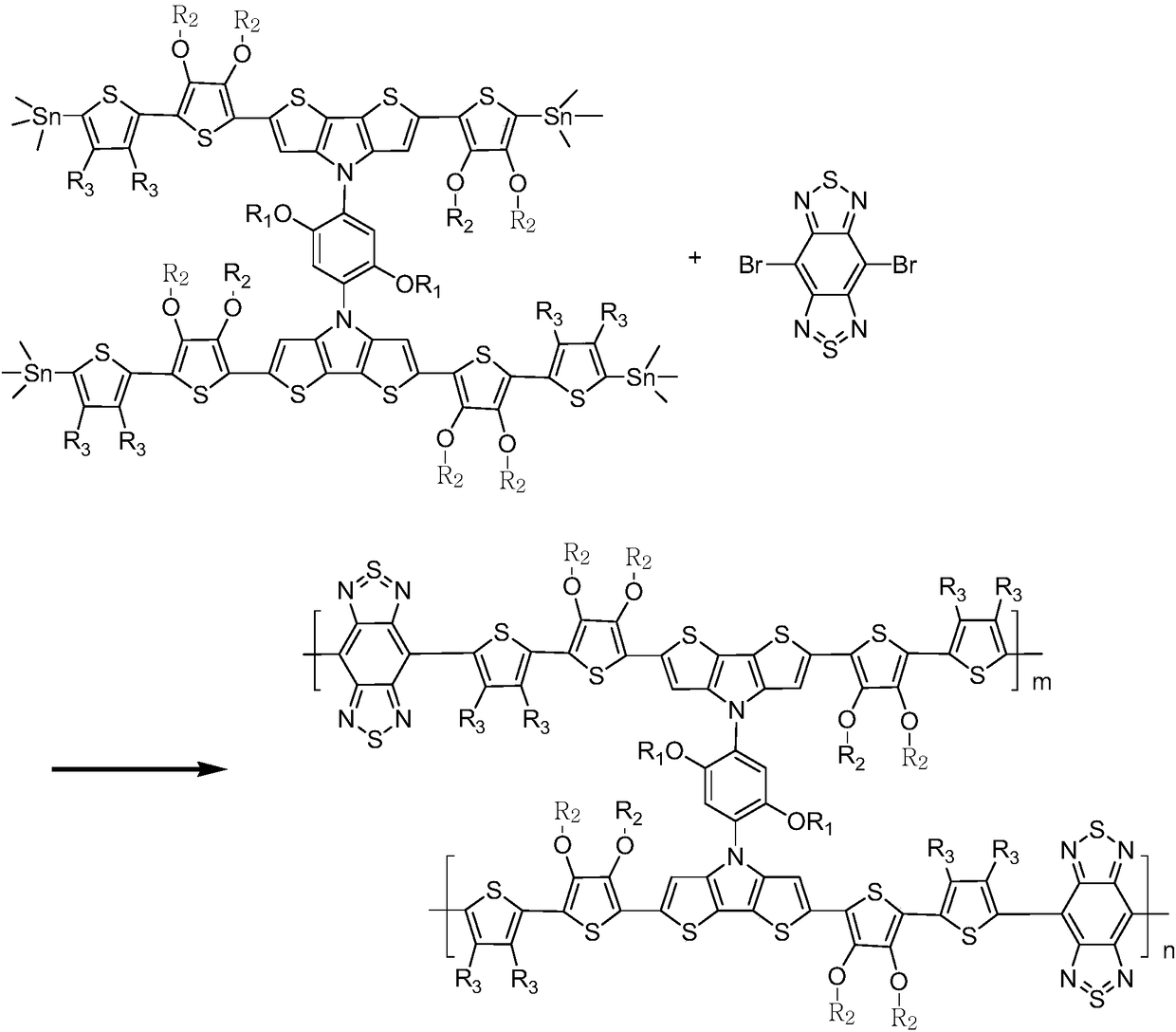A kind of d-a type copolymer donor material for photoactive layer of polymer solar cell device
A solar cell and photoactive layer technology, applied in filter regeneration, combustible gas purification, chemical instruments and methods, etc., can solve the problems of low conjugation degree, low band gap, harsh synthesis conditions, etc., and achieve high conjugation degree , Improve the degree of conjugation, enhance the solubility and processing performance
- Summary
- Abstract
- Description
- Claims
- Application Information
AI Technical Summary
Problems solved by technology
Method used
Image
Examples
Embodiment 1
[0022] (1) Bis(2-trimethylstannyl bithiophene)-p-di-N-dialkoxyphenyl bisthienopyrrole monomer
[0023]
[0024] Add bis(bithiophene)-p-di-N-dialkoxyphenylbisthienopyrrole (2.0mmol), chloroform (60mL) and acetic acid (12mL) in a 250mL round bottom flask, add N-bromobutyl Diimide (NBS, 2.1 mmol), and the reaction mixture was stirred at room temperature for 3 h. Dichloromethane (100 mL) was then added to the reaction mixture, and the organic layer was dried over anhydrous magnesium sulfate after washing with water. The solvent was removed under reduced pressure, and the obtained light brown solid was the target product with a yield of 95%.
[0025] (2) Bis(2-trimethylstannyl bithiophene)-p-di-N-dialkoxyphenyl bisthienopyrrole
[0026]
[0027] Dissolve bibromobithiophene-p-di-N-dialkoxyphenylbisthienopyrrole (1.22mmol) in tetrahydrofuran (150mL), cool the reaction system to -78°C, add n-BuLi (2.68 mmol), stirred for 1h, warmed up to room temperature and then stirred for ...
Embodiment 2
[0042] (1) Bis(2-trimethylstannyl bithiophene)-p-di-N-dialkoxyphenyl bisthienopyrrole monomer
[0043]
[0044] In a 250mL round bottom flask, add bis(bithiophene)-p-di-N-dialkoxyphenylbisthienopyrrole (2.0mmol), chloroform (60mL) and acetic acid (16mL), add N-bromobutyl Diimide (NBS, 2.2 mmol), the reaction mixture was stirred at room temperature for 0.5 h. Dichloromethane (180 mL) was then added to the reaction mixture, and the organic layer was dried over anhydrous magnesium sulfate after washing with water. The solvent was removed under reduced pressure to obtain a solid which was the target product with a yield of 91%.
[0045] (2) Bis(2-trimethylstannyl bithiophene)-p-di-N-dialkoxyphenyl bisthienopyrrole
[0046]
[0047] Dissolve bibromobithiophene-p-di-N-dialkoxyphenylbisthienopyrrole (1.22mmol) in tetrahydrofuran (100mL), cool the reaction system to -78°C, and add n-BuLi (2.65 mmol) of n-hexane solution, stirred for 0.5h, slowly warmed up to room temperature ...
PUM
| Property | Measurement | Unit |
|---|---|---|
| energy conversion efficiency | aaaaa | aaaaa |
| energy conversion efficiency | aaaaa | aaaaa |
| molecular weight distribution | aaaaa | aaaaa |
Abstract
Description
Claims
Application Information
 Login to View More
Login to View More - R&D
- Intellectual Property
- Life Sciences
- Materials
- Tech Scout
- Unparalleled Data Quality
- Higher Quality Content
- 60% Fewer Hallucinations
Browse by: Latest US Patents, China's latest patents, Technical Efficacy Thesaurus, Application Domain, Technology Topic, Popular Technical Reports.
© 2025 PatSnap. All rights reserved.Legal|Privacy policy|Modern Slavery Act Transparency Statement|Sitemap|About US| Contact US: help@patsnap.com



